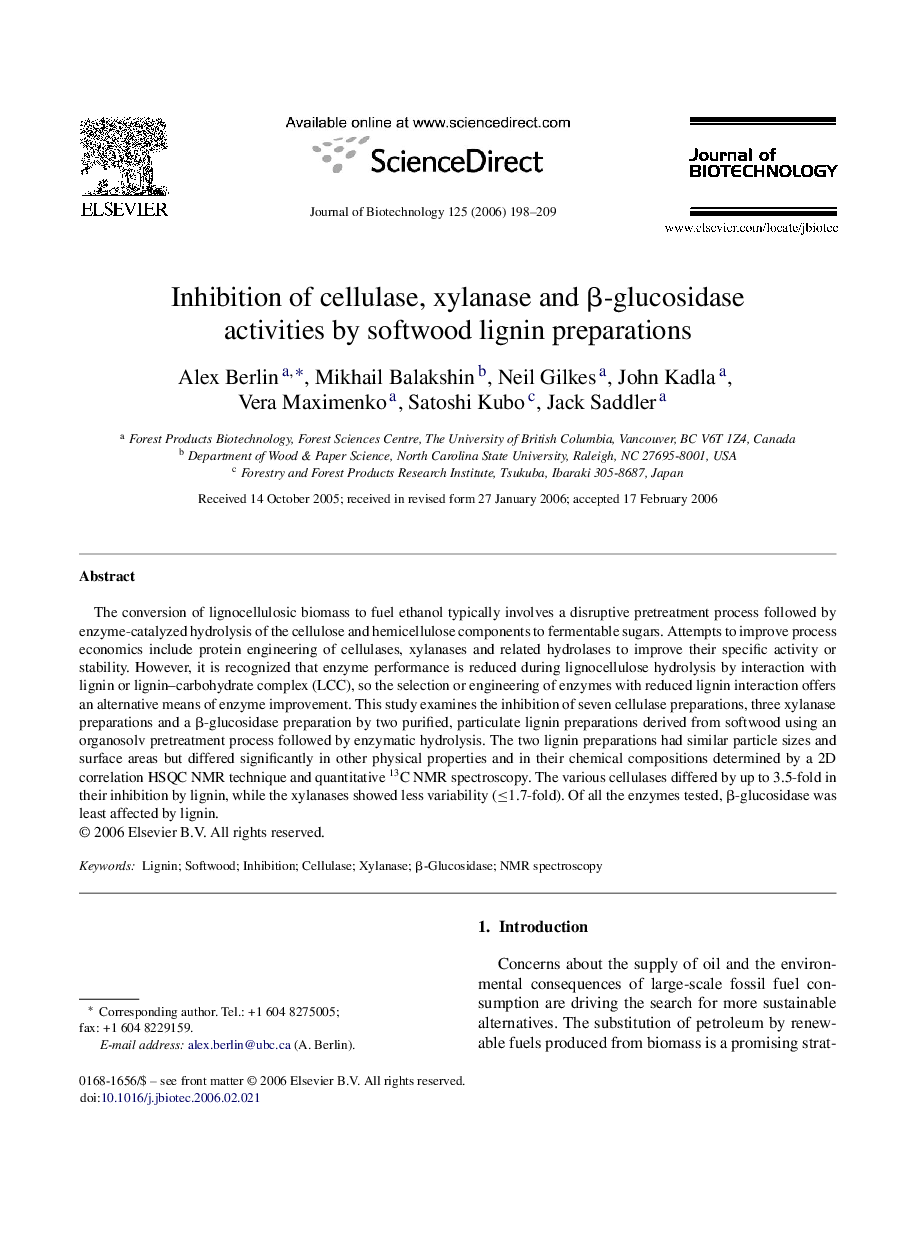| Article ID | Journal | Published Year | Pages | File Type |
|---|---|---|---|---|
| 25745 | Journal of Biotechnology | 2006 | 12 Pages |
The conversion of lignocellulosic biomass to fuel ethanol typically involves a disruptive pretreatment process followed by enzyme-catalyzed hydrolysis of the cellulose and hemicellulose components to fermentable sugars. Attempts to improve process economics include protein engineering of cellulases, xylanases and related hydrolases to improve their specific activity or stability. However, it is recognized that enzyme performance is reduced during lignocellulose hydrolysis by interaction with lignin or lignin–carbohydrate complex (LCC), so the selection or engineering of enzymes with reduced lignin interaction offers an alternative means of enzyme improvement. This study examines the inhibition of seven cellulase preparations, three xylanase preparations and a β-glucosidase preparation by two purified, particulate lignin preparations derived from softwood using an organosolv pretreatment process followed by enzymatic hydrolysis. The two lignin preparations had similar particle sizes and surface areas but differed significantly in other physical properties and in their chemical compositions determined by a 2D correlation HSQC NMR technique and quantitative 13C NMR spectroscopy. The various cellulases differed by up to 3.5-fold in their inhibition by lignin, while the xylanases showed less variability (≤1.7-fold). Of all the enzymes tested, β-glucosidase was least affected by lignin.
